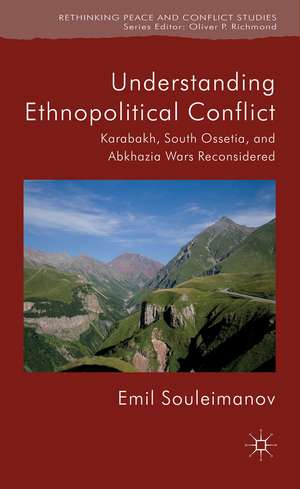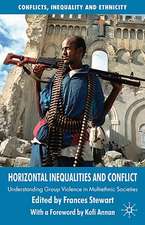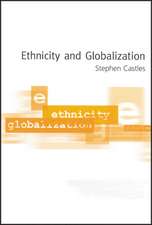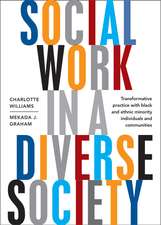Understanding Ethnopolitical Conflict: Karabakh, South Ossetia, and Abkhazia Wars Reconsidered: Rethinking Peace and Conflict Studies
Autor E. Souleimanoven Limba Engleză Hardback – 8 iul 2013
| Toate formatele și edițiile | Preț | Express |
|---|---|---|
| Paperback (1) | 625.92 lei 6-8 săpt. | |
| Palgrave Macmillan UK – 2013 | 625.92 lei 6-8 săpt. | |
| Hardback (1) | 634.11 lei 6-8 săpt. | |
| Palgrave Macmillan UK – 8 iul 2013 | 634.11 lei 6-8 săpt. |
Din seria Rethinking Peace and Conflict Studies
-
 Preț: 318.69 lei
Preț: 318.69 lei -
 Preț: 113.00 lei
Preț: 113.00 lei - 20%
 Preț: 565.31 lei
Preț: 565.31 lei -
 Preț: 268.40 lei
Preț: 268.40 lei - 15%
 Preț: 576.08 lei
Preț: 576.08 lei -
 Preț: 380.72 lei
Preț: 380.72 lei - 15%
 Preț: 687.67 lei
Preț: 687.67 lei - 15%
 Preț: 641.85 lei
Preț: 641.85 lei - 15%
 Preț: 628.49 lei
Preț: 628.49 lei -
 Preț: 387.78 lei
Preț: 387.78 lei - 15%
 Preț: 633.45 lei
Preț: 633.45 lei -
 Preț: 384.10 lei
Preț: 384.10 lei - 15%
 Preț: 640.22 lei
Preț: 640.22 lei -
 Preț: 385.64 lei
Preț: 385.64 lei -
 Preț: 378.43 lei
Preț: 378.43 lei -
 Preț: 381.09 lei
Preț: 381.09 lei -
 Preț: 384.14 lei
Preț: 384.14 lei -
 Preț: 382.22 lei
Preț: 382.22 lei -
 Preț: 383.01 lei
Preț: 383.01 lei -
 Preț: 387.78 lei
Preț: 387.78 lei -
 Preț: 386.63 lei
Preț: 386.63 lei -
 Preț: 388.74 lei
Preț: 388.74 lei -
 Preț: 387.78 lei
Preț: 387.78 lei -
 Preț: 388.74 lei
Preț: 388.74 lei -
 Preț: 387.01 lei
Preț: 387.01 lei -
 Preț: 379.93 lei
Preț: 379.93 lei -
 Preț: 386.77 lei
Preț: 386.77 lei -
 Preț: 387.01 lei
Preț: 387.01 lei -
 Preț: 383.36 lei
Preț: 383.36 lei -
 Preț: 385.50 lei
Preț: 385.50 lei - 15%
 Preț: 694.76 lei
Preț: 694.76 lei -
 Preț: 389.70 lei
Preț: 389.70 lei -
 Preț: 387.78 lei
Preț: 387.78 lei -
 Preț: 386.26 lei
Preț: 386.26 lei - 18%
 Preț: 777.48 lei
Preț: 777.48 lei -
 Preț: 389.70 lei
Preț: 389.70 lei -
 Preț: 382.22 lei
Preț: 382.22 lei -
 Preț: 382.22 lei
Preț: 382.22 lei -
 Preț: 382.02 lei
Preț: 382.02 lei -
 Preț: 385.88 lei
Preț: 385.88 lei
Preț: 634.11 lei
Preț vechi: 746.00 lei
-15% Nou
Puncte Express: 951
Preț estimativ în valută:
121.39€ • 124.85$ • 100.71£
121.39€ • 124.85$ • 100.71£
Carte tipărită la comandă
Livrare economică 19 februarie-05 martie
Preluare comenzi: 021 569.72.76
Specificații
ISBN-13: 9781137280220
ISBN-10: 1137280220
Pagini: 250
Ilustrații: XIV, 250 p.
Dimensiuni: 140 x 216 x 20 mm
Greutate: 0.54 kg
Ediția:2013
Editura: Palgrave Macmillan UK
Colecția Palgrave Macmillan
Seria Rethinking Peace and Conflict Studies
Locul publicării:London, United Kingdom
ISBN-10: 1137280220
Pagini: 250
Ilustrații: XIV, 250 p.
Dimensiuni: 140 x 216 x 20 mm
Greutate: 0.54 kg
Ediția:2013
Editura: Palgrave Macmillan UK
Colecția Palgrave Macmillan
Seria Rethinking Peace and Conflict Studies
Locul publicării:London, United Kingdom
Cuprins
Acknowledgements Preface 1. Introduction PART I: THE SOUTH CAUCASUS 2. Theories Of Ethnic Conflict And Civil War 3. Aims And Objectives 4. Methodological Remarks 5. Organization Of The Book 6. Note On Transliteration PART II: THEORIZING ON THE CAUSES OF CIVIL WAR AND ETHNOPOLITICAL CONFLICT 7. Explaining The Terms 8. Typology Of Conflicts 9. Conflict Vocabulary 10. Periodization In Ethnopolitical Conflict And Civil War 11. Phase A. Mobilization – Latent Conflict 12. Phase B. Radicalization – Sporadic Or Low-Scale Violence 13. Phase C. Sustained Large-Scale Violence – Civil War 14. Structural Accounts 15. Level Of Economic Development 16. Facilitating A Rebellion? Natural Resources, Diaspora And Geography 17. Demographic Factors: Ethnic Diversity, Size, And Proportions 18. Regime Type And Regime Change 19. Social Inequality Accounts 20. General Shortcomings Of Quantitative Research 21. Conflict-Escalation-Based Theories 22. Perceptional Accounts 23. Ancient Hatreds 24. Security Dilemma25. Symbolic (Identity) Politics 26. Instrumentalist Accounts – Manipulative Leaders 27. Opportunity In Power Asymmetry: A Missing Causal Link Between Ethinc Riots And Civil War? PART III: THE SOUTH CAUCASUS 28. A History Of Identities, An Identity Of Histories 29. (I) Azerbaijan And Azerbaijanis 30. Azerbaijan 31. Relations With Persia And Persians, Or Turks And Turkey, In Historical Perspective 32. Relations With Russians And Russia In Historical Perspective 33. (Ii) Armenia And Armenians 34. Armenia 35. Relations With Turks And Turkey In Historical Perspective 36. Relations With Russians And Russia In Historical Perspective 37. (Iii) Georgia And Georgians 38. Relations With Russians And Russia In Historical Perspective 39. Forging Nation States: Societal Transition In The South Caucasus Republics 40. (I) The Internal Political Situation In Azerbaijan On The Eve Of The Breakup Of The Ussr 41. The Role Of Clans In Azerbaijani Politics 42. Mütällibov's Rule: Chaotic Internal Politics 43. Elçibäy: The Nationalists In Power 44. The Rise Of Heydär Äliyev 45. (Ii) The Internal Political Situation In Armenia On The Eve Of The Breakup Of The Ussr 46. Georgia 47. The Internal Political Situation In Georgia On The Eve Of The Breakup Of The Ussr PART IV: NAGORNO-KARABAKH, SOUTH OSSETIA AND ABKHAZIA: THE ASCENT OF ETHNOPOLITICAL CONFLICT 48. Nagorno-Karabakh 49. Conflict And Historiography 50. Chronology Of Escalation 51. Phase A: Mobilization – Latent Conflict 52. Phase B. Radicalization – Sporadic Violence 53. Phase C. Armed Conflict – Civil (International) War 54. The Conflicts In South Ossetia And Abkhazia 55. South Ossetia 56. Abkhazia 57. Conflict And Historiography 58. South Ossetia: Chronology Of Escalation 59. Phase A: Mobilization – Latent Conflict 60. Phase C. Armed Conflict – Civil War 61. Abkhazia: Chronology Of Escalation 62. Phase A: Mobilization – Latent Conflict 63. Phase B. Radicalization – Sporadic Violence 64. (I) Turkey 65. Relations With Azerbaijan 66. Relations With Armenia 67. Turkey And The War In Nagorno-Karabakh 68. (Ii) Iran 69. Relations With Azerbaijan 70. Relations With Armenia 71. Iran And The War In Nagorno-Karabakh 72. (Iii) Russia 73. Relations With Azerbaijan 74. Relations With Armenia 75. Russia And The War In Nagorno-Karabakh 76. (Iv) Russian Relations With Georgia 77. Russian-Georgian Relations And The War In South Ossetia 78. Russian-Georgian Relations And The War In Abkhazia 79. Phase C. Armed Conflict – Civil (International) War 80. Outcomes Of The Ethnopolitical Conflicts In Georgia PART V: CONCLUSIONS 81. Level Of Economic Development 82. Facilitating A Rebellion? Natural Resources, Diaspora And Geography 83. Demographic Factors: Ethnic Diversity, Size, And Proportions 84. Regime Type And Regime Change 85. Social Inequality Accounts 86. Ancient Hatreds 87. Security Dilemma 88. Symbolic (Identity) Politics 89. Manipulative Leaders 90. Expanding The Theory 91. In-Group Cohesion 92. External Support To SecessionistMovements Bibliography
Recenzii
“The book is a significant contribution to theexisting scholarly literature on the conflicts in the South Caucasus region.Souleimanov’s book presents a theoretically and empirically synthetic approachto detailed studies of conflict processes, which includes constructivistelements. … This book is a very good source for students and scholars ofpolitical science, international relations and security studies interested inethno-political conflicts, civil wars and violence in the South Caucasusregion.” (Zinaida Shevchuk, Europe-Asia Studies, Vol. 67 (9), November, 2015)
"Souleimanov has produced here just the kind of objective study that the region and its well-wishers need, an impartial, critical, well-researched study that weighs both the historical evidence and the contending theoretical approaches to these conflicts that is necessary for their proper analysis. Both readers coming to these issues for the first time and experts in the field will benefit from his careful analysis [...] One can only hope that this work will also inspire political actors to renew their efforts to find satisfactory political solutions to these conflicts before we have a repletion of the events of 2008 that could only carry with them even greater negative repercussions for international security."
- Stephen Blank, Strategic Studies Institute, US Army War College at Carlisle Barracks, USA
"Emil Souleimanov presents a definitive work on conflict in the region, analysing a wealth of hitherto unexamined issues and sources. Drawing on a range of case studies, Souleimanov offers a rich, thought-provoking, and empirically-grounded account of local and regional political dynamics. In so doing he enhances our understanding of the theories of ethnic conflict and civil war, analysing the onset and escalation of conflict, presentinga scheme for understanding periods of conflict, and exploring the crucial role of elites and their perception of opportunity in transforming low-scale ethnic riots into fully-fledged civil war. The book deserves to be, and will be, widely read and frequently cited."
- Cerwyn Moore, University of Birmingham, UK
"This book is one of the fullest accounts to date about ethnopolitical conflicts in the South Caucasus. It is an impressively theorized explanation set in a comparative perspective and explicitly related to the key debates in the field of ethnic politics, contentious mobilizations, and civil wars. Its findings are rigorously formulated, they are informed by advanced theoretical thinking, and these findings clearly have relevance to understanding the current political transformations in many countries both inside and outside the South Caucasus. A statement of theoretical maturation, empirical complexity and unbiased analysis, Souleimanov's book is definitely wortha read.
- Georgi Derluguian, Northwestern University, USA
"This book is a must read for everybody interested in the South Caucasus, a complicated region at the crossroads of Europe and Asia that has seen a series of ethnic conflicts, civil wars, and geopolitical turmoil. Drawing on empirical detail, Souleimanov reflects on the vast array of current theories pertinent to the field of ethnic conflict and civil war, presenting an outstanding piece of research that improves our understanding of the causes, evolution, and outcomes of the regional conflicts in a broader context of the dissolution of the Soviet Union, the establishment of independent republics, and the roles played by external powers."
- Dmitry Shlapentokh, Indiana University-South Bend, USA
"The Caucasus region today receives growing attention among scholars and decision-makers. While the countries of the region have come through their second decade as independent states, the general situation in this region is far from stable or predictable. Five of the seven ethno-political conflicts in the former USSR have taken place in the Caucasus and three of the four de facto entities in the post-Soviet space have been found in the region. This highly professional book provides us a comprehensive account of the regional conflicts as well as their controversial dynamics. It is a valuable work demonstrating how the Caucasus risks impact on the wider international security environment."
- Sergey Markedonov, Center for Strategic and International Studies, Washington, USA
"Professor Souleimanov's book gives a detailed account and an excellent analysis of the conflicts in the South Caucasus in the late 1980s-early 1990s, drawing on his encyclopaedic knowledge of the events and of the literature. It uses the evidence of the historical processes to test a range of social science theories about ethnic conflict, develop his own, and suggest ways for their improvement. Importantly, the book shows that while Russia may sometimes use the conflicts for its own advantage, neither it nor the Soviet Union created them, with the aim of dividing and ruling the Caucasus, as some analysts inside and outside the region allege.
- Peter Duncan, UCL, UK
"Souleimanov presents a valuable revisionist interpretation of the conflicts over Nagorno-Karabakh, Abkhazia and South Ossetia as well as other historical and political developments in this very important though understudied region of the world. This book combines analysis of theories of ethnic conflict and civil war with a readable and unbiased narrative history. Readers will have a much better understanding of the formation and manifestations of ethnic identity in the South Caucasus as well as the geopolitics of the region."
- Michael B. Bishku, Augusta State University, USA
"Souleimanov has produced here just the kind of objective study that the region and its well-wishers need, an impartial, critical, well-researched study that weighs both the historical evidence and the contending theoretical approaches to these conflicts that is necessary for their proper analysis. Both readers coming to these issues for the first time and experts in the field will benefit from his careful analysis [...] One can only hope that this work will also inspire political actors to renew their efforts to find satisfactory political solutions to these conflicts before we have a repletion of the events of 2008 that could only carry with them even greater negative repercussions for international security."
- Stephen Blank, Strategic Studies Institute, US Army War College at Carlisle Barracks, USA
"Emil Souleimanov presents a definitive work on conflict in the region, analysing a wealth of hitherto unexamined issues and sources. Drawing on a range of case studies, Souleimanov offers a rich, thought-provoking, and empirically-grounded account of local and regional political dynamics. In so doing he enhances our understanding of the theories of ethnic conflict and civil war, analysing the onset and escalation of conflict, presentinga scheme for understanding periods of conflict, and exploring the crucial role of elites and their perception of opportunity in transforming low-scale ethnic riots into fully-fledged civil war. The book deserves to be, and will be, widely read and frequently cited."
- Cerwyn Moore, University of Birmingham, UK
"This book is one of the fullest accounts to date about ethnopolitical conflicts in the South Caucasus. It is an impressively theorized explanation set in a comparative perspective and explicitly related to the key debates in the field of ethnic politics, contentious mobilizations, and civil wars. Its findings are rigorously formulated, they are informed by advanced theoretical thinking, and these findings clearly have relevance to understanding the current political transformations in many countries both inside and outside the South Caucasus. A statement of theoretical maturation, empirical complexity and unbiased analysis, Souleimanov's book is definitely wortha read.
- Georgi Derluguian, Northwestern University, USA
"This book is a must read for everybody interested in the South Caucasus, a complicated region at the crossroads of Europe and Asia that has seen a series of ethnic conflicts, civil wars, and geopolitical turmoil. Drawing on empirical detail, Souleimanov reflects on the vast array of current theories pertinent to the field of ethnic conflict and civil war, presenting an outstanding piece of research that improves our understanding of the causes, evolution, and outcomes of the regional conflicts in a broader context of the dissolution of the Soviet Union, the establishment of independent republics, and the roles played by external powers."
- Dmitry Shlapentokh, Indiana University-South Bend, USA
"The Caucasus region today receives growing attention among scholars and decision-makers. While the countries of the region have come through their second decade as independent states, the general situation in this region is far from stable or predictable. Five of the seven ethno-political conflicts in the former USSR have taken place in the Caucasus and three of the four de facto entities in the post-Soviet space have been found in the region. This highly professional book provides us a comprehensive account of the regional conflicts as well as their controversial dynamics. It is a valuable work demonstrating how the Caucasus risks impact on the wider international security environment."
- Sergey Markedonov, Center for Strategic and International Studies, Washington, USA
"Professor Souleimanov's book gives a detailed account and an excellent analysis of the conflicts in the South Caucasus in the late 1980s-early 1990s, drawing on his encyclopaedic knowledge of the events and of the literature. It uses the evidence of the historical processes to test a range of social science theories about ethnic conflict, develop his own, and suggest ways for their improvement. Importantly, the book shows that while Russia may sometimes use the conflicts for its own advantage, neither it nor the Soviet Union created them, with the aim of dividing and ruling the Caucasus, as some analysts inside and outside the region allege.
- Peter Duncan, UCL, UK
"Souleimanov presents a valuable revisionist interpretation of the conflicts over Nagorno-Karabakh, Abkhazia and South Ossetia as well as other historical and political developments in this very important though understudied region of the world. This book combines analysis of theories of ethnic conflict and civil war with a readable and unbiased narrative history. Readers will have a much better understanding of the formation and manifestations of ethnic identity in the South Caucasus as well as the geopolitics of the region."
- Michael B. Bishku, Augusta State University, USA
Notă biografică
Emil Aslan Souleimanov is Assistant Professor in the Department of Russian and East European Studies at Charles University, Prague, Czech Republic. He is author of An Endless War: The Russian-Chechen Conflict in Perspective (2007). He has published widely in journals such as Europe-Asia Studies, Problems of Post-Communism, Middle East Policy, Osteuropa and Politique étrangère and provided numerous analyses to the Czech Ministries of Foreign Affairs and Defense, and NATO.
















